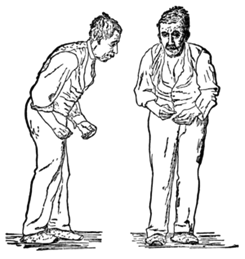


Joseph R. Anticaglia MD
Medical Advisory Board
Parkinson’s disease is a chronic, neurodegenerative, and progressive disorder of the brain causing motor and non-motor symptoms. It’s chronic because symptoms persist for more than 3 months.
PD is a neuro-degenerative because the disease causes a deterioration, and loss of specific nerve cells in part of the brain called the substantia nigra which secretes the hormone dopamine. Dopamine sends signals between nerve cells of your brain making voluntary movement possible (neurotransmitter). PD brings about a drop in dopamine production and the rise of Parkinson symptoms. This process happens without any evidence of an infection.
It’s progressive because PD is an ongoing condition where patients get worse over time. The symptoms may be initially mild but over months and years, in stages, they become more intense and enfeebling. PD is not contagious, and there is no cure for it currently.

The symptoms and stages of Parkinson disease vary from person to person. Nobody gets all the symptoms of PD or do they suffer the same severity of symptoms. The stages of this disease serve as a “guide” to its progression helping doctors and caretakers better manage patients with this disorder.
Early — stage I &2
Mid — stage 3
Late — stage 4 &5
Symptoms are mild in the earliest stage of this disease and involve only one side of the body. The symptoms do not interfere with the person’s usual activities, and he often doesn’t seek medical attention. Mild tremor and rigidity may occur on one side of the body.
This stage is still considered early Parkinson’s disease. People experience bilateral involvement and facial masking without balance problems. Tremor and rigidity worsen interfering with one’s daily activities. Stooped posture may be present at this stage.
Persons may complain of problems with their sense of smell and taste. Speech abnormalities can be noticed such as a soft voice, monotone voice or slurred speech. It may take months or years for stage one to progress to stage 3.
Stage three is considered mid-stage and loss of balance and slowness of movement place patients in in this category. They’re fully independent, but encounter difficulties dressing, hygiene and eating. They can get up from a chair with their arms crossed. All other symptoms of PD may be present at this stage.
What’s troublesome is a person’s loss of balance accompanied by a higher likelihood of falling during this stage of the disease. The gait is reasonably normal while walking; however, if he or she tries to turn to go in a different direction, the feet feel as if they’re stuck to the ground (freezing gait). While trying to “unstick” their feet, people are prone to falls and injuries.
This is the late, severe stage of Parkinson’s disease. Individuals are noticeably incapacitated, and independent living is not an option. They require assistance to get up from a chair. Individuals can barely walk independently. Their upper torso is flexed forward, and their stride length is shortened. They need assistance walking and help with their daily activities (washing, dressing, hygiene).
Stage 5 is the most debilitating, crippling aspect of PD. The person is confined to bed or a wheelchair requiring nursing care 24/7 for all activities. Muscle rigidity makes it impossible to stand or walk. In this late stage, the individual may experience hallucinations and delusions.
Parkinson disease is a chronic, progressive, neurodegenerative disease that relentlessly challenges a person’s body and psyche. The cause is unknown, but treatment is available to mitigate the suffering of this movement disorder. People have lived productive lives and classifying PD into stages has helped clinicians manage this problem.
This article is intended solely as a learning experience. Please consult your physician for diagnostic and treatment options.